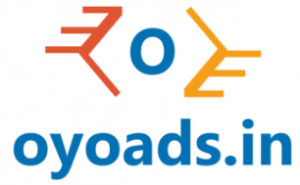A warm welcome to the SAS Viya Platform Administration course by Uplatz.
SAS Viya is a cloud-enabled, in-memory analytics engine that offers a wide range of analytical capabilities. It’s designed to handle large volumes of data and perform complex analytics tasks quickly and efficiently.
Here’s how it works and some of its features:
-
Architecture: SAS Viya is built on a microservices architecture, which means that different components of the platform are modular and can be scaled independently. This architecture allows for flexibility and scalability, making it suitable for various analytical needs.
-
Integration: SAS Viya integrates with a variety of data sources, including traditional relational databases, Hadoop clusters, and cloud-based storage solutions. This allows users to access and analyze data from multiple sources without having to move it around.
-
In-Memory Processing: One of the key features of SAS Viya is its in-memory processing capabilities. By keeping data in-memory, the platform can perform computations much faster than traditional disk-based systems, enabling real-time analytics on large datasets.
-
Machine Learning: SAS Viya includes a comprehensive set of machine learning algorithms and techniques for building predictive models. These algorithms are optimized for performance and scalability, allowing users to train models on large datasets with ease.
-
Deep Learning: In addition to traditional machine learning techniques, SAS Viya also supports deep learning models. This allows users to build and train neural networks for tasks such as image recognition, natural language processing, and time series forecasting.
-
Visual Analytics: SAS Viya provides a suite of interactive visualization tools that allow users to explore data and gain insights quickly. These tools include dashboards, charts, and graphs that can be easily customized to suit specific analytical needs.
-
Open Integration: SAS Viya is designed to work with open-source technologies and standards, making it easy to integrate with existing systems and workflows. This allows organizations to leverage their existing investments in tools and infrastructure while still benefiting from the advanced analytics capabilities of SAS Viya.
SAS Viya is a powerful analytics platform that offers scalability, performance, and a wide range of analytical capabilities, making it suitable for a variety of use cases across industries.
SAS Viya offers a wide range of capabilities for tasks like:
-
Data exploration and visualization: Uncover insights from your data through interactive dashboards and reports.
-
Advanced analytics: Leverage machine learning, artificial intelligence, and statistical modeling for deeper analysis.
-
Data preparation and management: Clean, transform, and manage your data efficiently.
-
Collaboration and sharing: Share insights and reports with colleagues and stakeholders easily.
How SAS Viya works:
SAS Viya is built on a microservices architecture, which means it’s modular and scalable. This allows you to deploy and use only the components you need, as well as scale the platform up or down based on your demands.
The platform can be deployed on-premises, in the cloud, or in a hybrid environment. It uses Kubernetes for container orchestration, which provides flexibility and portability.
Here’s a basic overview of the workflow:
-
Data is imported from various sources like databases, spreadsheets, or cloud storage.
-
Data preparation tasks like cleaning and transformation are performed.
-
Analysis is done using pre-built tools or custom code.
-
Results and insights are visualized in dashboards and reports.
-
Collaboration and sharing of insights takes place with other users.
Key Features of SAS Viya
Here are some of the key features that make SAS Viya stand out:
-
Open-source and cloud-native: Provides flexibility and scalability for modern environments.
-
Comprehensive analytics: Offers a wide range of tools for data exploration, visualization, and machine learning.
-
Integrated and user-friendly: Provides a seamless experience for both analysts and business users.
-
Secure and scalable: Meets stringent security standards and can handle large datasets effectively.
-
Flexible deployment: Can be deployed on-premises, in the cloud, or in a hybrid environment.
Course Objectives
-
Understand the key concepts and architecture of SAS Viya.
-
Navigate the SAS Viya user interface and workspace.
-
Import and manage data in SAS Viya.
-
Explore and visualize data using SAS Visual Analytics.
-
Perform basic data manipulation and transformation tasks.
-
Build and run simple analytical models.
-
Share and collaborate on data and insights with others.
SAS Viya Platform Administration – Course Curriculum
1. Introduction to SAS Viya
-
Overview of SAS Viya and its capabilities
-
Key concepts and architecture of SAS Viya
-
Getting started with the SAS Viya user interface
-
Navigating the SAS Viya workspace
-
Managing user accounts and permissions
2. Data Management in SAS Viya
-
Importing data from various sources (e.g., databases, spreadsheets, cloud storage)
-
Understanding data formats and structures
-
Working with data libraries and tables
-
Cleaning and transforming data
-
Creating calculated variables
3. Data Exploration and Visualization with SAS Visual Analytics
-
Introduction to SAS Visual Analytics
-
Creating basic visualizations (e.g., bar charts, line charts, scatter plots)
-
Working with different chart types and options
-
Building interactive dashboards and reports
-
Sharing and exporting visualizations
4. Basic Analytics in SAS Viya
-
Introduction to statistical analysis concepts
-
Performing descriptive statistics
-
Creating crosstabs and pivot tables
-
Building simple regression models
-
Interpreting and communicating analytical results
5. Collaboration and Sharing in SAS Viya
-
Sharing data and insights with other users
-
Working with user groups and permissions
-
Utilizing collaboration tools in SAS Viya
-
Best practices for data governance and security















![JavaScript Beginners Guide [2022]](https://oyoads.in/wp-content/uploads/javascript-beginners-guide-2022_6181500ea0844-100x70.jpeg)
![100%OFF]C Programming skills test with Explanation-Beg./Inter. level](https://oyoads.in/wp-content/uploads/2020/04/20200424_165925-218x150.jpg)






![[100% Free]Python Bootcamp 2020 Build 15 working Applications and Games (31.5 Hours)](https://oyoads.in/wp-content/uploads/2020/05/Python-Bootcamp-2020-Build-15-working-Applications-and-Games-1-100x70.jpg)

![[100% Free]Java Programming: Complete Beginner to Advanced](https://oyoads.in/wp-content/uploads/2020/05/IMG_20200519_054150_522-100x70.jpg)
